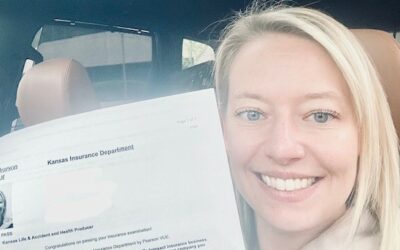By: Deb Gordon
Mar 9, 2021
Sticker shock is a daily occurrence for Americans trying to fill prescriptions at retail pharmacies—and it’s getting worse due to Covid-19. Increasingly, consumers are turning to their pharmacists for help.
According to the 2021 Medication Access Report from CoverMyMeds, 67% of patients reported learning that their prescription would cost more than they expected when they went to pick it up. Of those, 55% asked their pharmacist or provider for cheaper alternatives. Overall, one in five patients surveyed said they’ve relied more on their pharmacist to explain prescription benefit and payment options due to the pandemic.
“It seems like almost every other patient I meet with is taken aback by the cost of their medication—even if his or her copay is low and insurance pays for the majority of medications,” said Nabila Ismail, a licensed pharmacist who worked in a community pharmacy for five years before joining GoodRx as a content and engagement manager (Ismail is also a Forbes contributor).
Sticker shock is more than an inconvenience. It reflects worsening financial hardships, which 65% of patients in the survey reported. At the same time, drug prices are rising according to a GoodRx analysis that showed in January 2021 alone, 832 drug prices increased by an average of nearly 5%.
Together, these factors are causing more patients to go without the medicine they need.
More than one-third of consumers surveyed reported leaving the pharmacy without their medication, 10% more than in last year’s survey.
mong patients who filled their prescriptions, 43% reported sacrificing basic needs to afford their prescriptions.
Others filled their prescriptions but didn’t take them as directed. More than 40% of patients surveyed—including 58% of uninsured patients—skipped or reduced doses to stretch out the medication supply.
“That’s scary because they think they’re getting that added benefit of their medication and they’re truly not,” said Megan Marchal, pharmacist in charge at CoverMyMeds Specialty Pharmacy.
Taken improperly, medications may not work as well they’re supposed to—or at all—which can be dangerous for patients, according to Marchal.
“We see people ending up in the hospital because they’re not able to get that medication that they need,” she said. “Unfortunately, it’s costing them more in the long run.”
COMING OUT FROM BEHIND THE COUNTER
Pharmacists’ roles are changing. Helping patients find affordable medications has become part of the job.
During the pandemic, more than two-thirds of pharmacists surveyed reported taking on new job responsibilities; of those, 62% said their expanded responsibilities included helping patients find new ways to save money on their prescriptions.
On a day-to-day basis, 74% of pharmacists reported helping patients find cheaper alternatives or actually changing the prescription to a cheaper medication. Many see this as their job; 68% of pharmacists said they are typically responsible for helping find alternatives when patients have trouble affording medications. By comparison, only 47% said it is the provider’s responsibility.
“As pharmacists (and pharmacy staff), we’re the only healthcare professional usually available when patients find out about the cost,” Ismail said. “More times than not, cost is a barrier and a conversation that a pharmacist has with their patient.”
Ismail didn’t receive formal training in how to help consumers find more affordable alternatives, but she has learned it’s an essential function. “It’s something I’ve realized I need to be an expert in to help my patients to the best of my ability.”
Despite trends that put distance between patients and pharmacists—such as Telehealth and prescription delivery—Marchal thinks pharmacists’ expanded responsibilities are here to stay.
“That pharmacist has really started stepping out from behind the counter,” she said. “We’re starting to rely on that corner pharmacist in their community in order to help support patient care.”
HOW TO LOWER DRUG COSTS
One upside of the strain of medication costs, according to Ismail, is that more patients are asking about their options and seeking alternatives.
The CoverMyMeds survey found the same phenomenon: consumers are taking actions to find lower-cost medications. Sixty-two percent of patients reported asking their provider about the price of their medication and about more affordable options.
Patients are also using price-comparison apps or discount websites to find lower prices. When faced with a prescription that cost more than expected, 43% of patients said they checked a pharmacy comparison app to find a better price, up substantially from the prior year’s survey.
For patients looking to lower medication costs, Marchal recommends asking the pharmacist for help. The pharmacist may be able to help find coupons or copayment assistance from the drug manufacturer. They may also be able to approach the prescriber to talk about switching the prescription to a cheaper medication.
Pharmacists may also be best positioned to identify cheaper drugs based on a patient’s specific insurance plan. “We’re one of the few who have the ability to help with those decisions since we can see the cost in real time with the patient’s insurance coverage,” Ismail said.
Most importantly, consumers should voice their concerns. Widespread financial distress may help consumers have honest conversations with their pharmacists about financial challenges with confidence rather than shame.
“If you talk to the pharmacist, they all understand that we’re all going through this together,” said Marchal. “If patients aren’t speaking up, really what’s at stake is their own health; they’re not going to achieve their own healthcare goals and their healthcare outcomes.”




